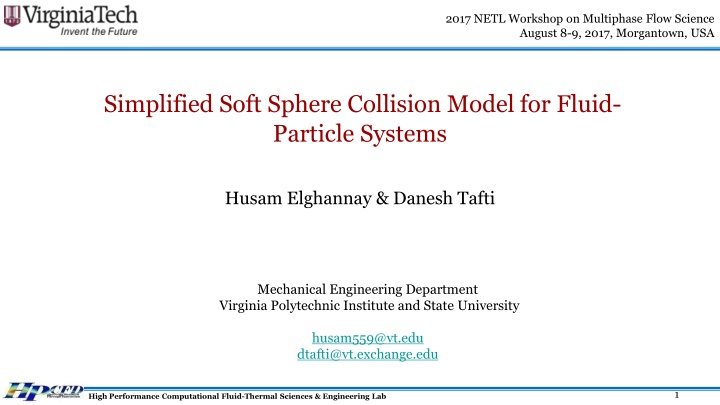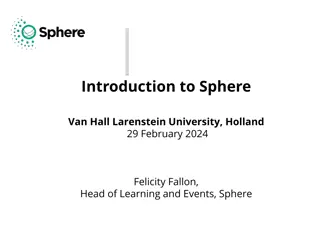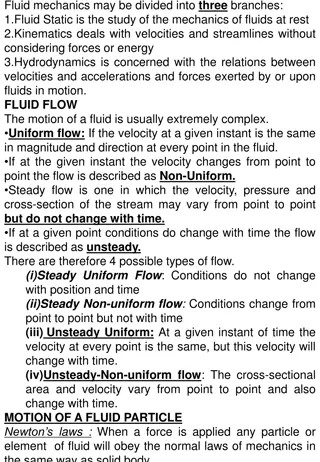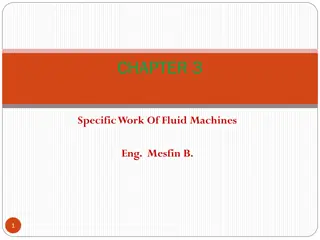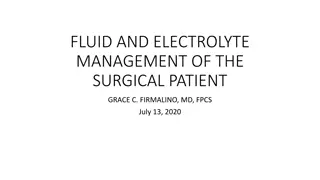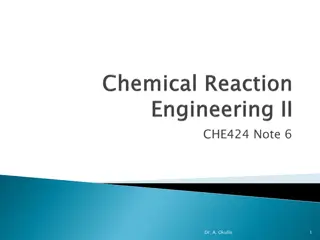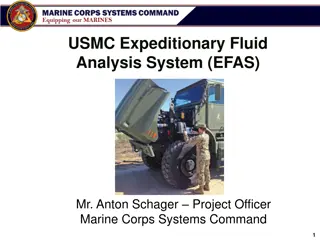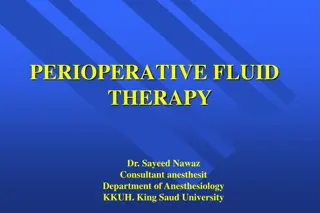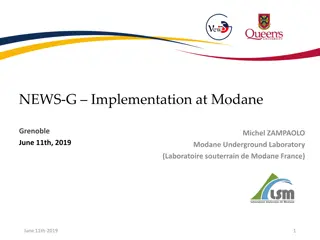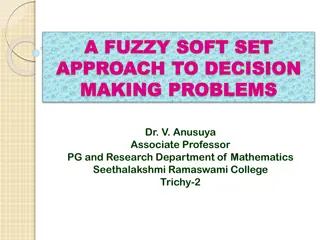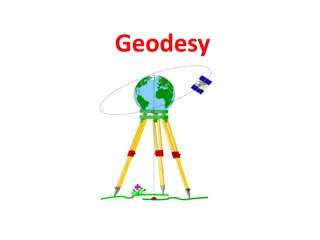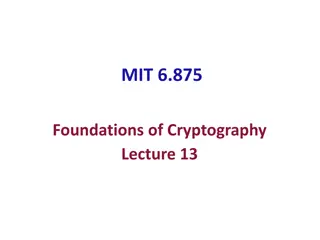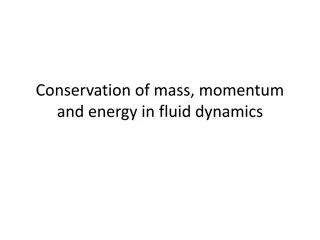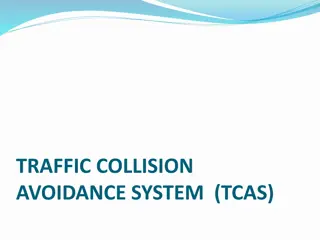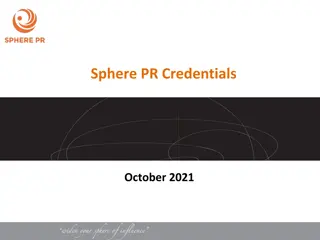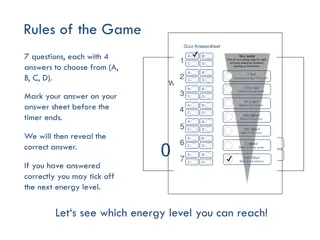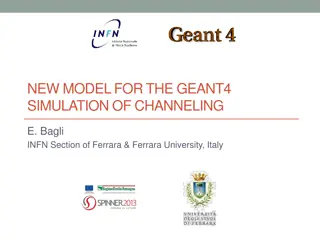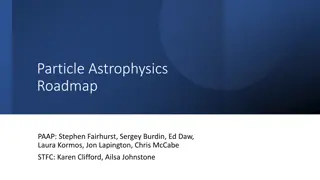Simplified Soft Sphere Collision Model for Fluid-Particle Systems
This workshop presentation discusses a simplified soft sphere collision model for fluid-particle systems, outlining the linear collision model, different existing implementations, validation of impacts, and proper conclusions. Formulations and experiments on oblique impacts are also explored, with results on rebound velocities and force patterns.
Download Presentation

Please find below an Image/Link to download the presentation.
The content on the website is provided AS IS for your information and personal use only. It may not be sold, licensed, or shared on other websites without obtaining consent from the author.If you encounter any issues during the download, it is possible that the publisher has removed the file from their server.
You are allowed to download the files provided on this website for personal or commercial use, subject to the condition that they are used lawfully. All files are the property of their respective owners.
The content on the website is provided AS IS for your information and personal use only. It may not be sold, licensed, or shared on other websites without obtaining consent from the author.
E N D
Presentation Transcript
2017 NETL Workshop on Multiphase Flow Science August 8-9, 2017, Morgantown, USA Simplified Soft Sphere Collision Model for Fluid- Particle Systems Husam Elghannay & Danesh Tafti Mechanical Engineering Department Virginia Polytechnic Institute and State University husam559@vt.edu dtafti@vt.exchange.edu 1 High Performance Computational Fluid-Thermal Sciences & Engineering Lab
Outline Description of linear SS collision model Different existing implementation & simplified model Validation oblique impact sphere on wall Proper implementation Conclusion 2 High Performance Computational Fluid-Thermal Sciences & Engineering Lab
Linear SS Collision Model ?? ?? ???? Dashpot ( ) ??? > 0 ??= Spring (k) 0 ???? ?? ?? ???? ??? |?? ??+ ????| < ?? ?? ??= Slider (Ft Fn) ?? ?? ???? ??= ? ??= ?.? ? ??= ? ?? ? ? ???= ??? 1+ ???? ? ? ? 3 High Performance Computational Fluid-Thermal Sciences & Engineering Lab
Model Formulation Different formulations exist when sliding occurs! ????+???? |????+????| ??= ?? ?? Model A ?? |??| Can be expressed as ??= ?? ?? E.g., Candull & Strack (1979) ?? |??| ??= ?? ?? Model B E.g., Tsuji et al. (1993) ?? |??| Can also introduce Model C in which ?? = ???? along with ??= ?? ?? 4 High Performance Computational Fluid-Thermal Sciences & Engineering Lab
Oblique Impact Experiment Impact angle Experiment by Kharaz et al. (2001) 5 mm Aluminum sphere falls on glass anvil at 3.9 m/s (no initial spin) Parameter value Impact angle is changed and rebound (linear and angular) velocities are recorded Density (sphere) 2200 (kg/m3) 2700 (kg/m3) Density (wall) stiffness coefficient kn 1000 (N/m) stiffness coefficient kt 860 (N/m) COR 0.98 (-) Normal impact is nearly elastic Friction factor 0.092 (-) Diameter 5 (mm) 1.13 s Time step 5 High Performance Computational Fluid-Thermal Sciences & Engineering Lab
Oblique impact: results Tangential COR Rebound angular velocity 6 High Performance Computational Fluid-Thermal Sciences & Engineering Lab
Oblique impact: tangential force pattern 7 High Performance Computational Fluid-Thermal Sciences & Engineering Lab
Sphere on Wall Uf=(5/7)Uo, frp=(5/7)Uo Uo, o=0 Terminal conditions u/uo=5/7 w.r/uo=5/7 ts=2uo/(7 g) g to=0 ts mpg Test case: 10 mm sphere traveling on a flat plate with initial velocity of 1 m/s. =2500 f=0.7, r=0.0 8 High Performance Computational Fluid-Thermal Sciences & Engineering Lab
Sphere on wall: results Models B &C Model A 9 High Performance Computational Fluid-Thermal Sciences & Engineering Lab
Sphere on wall: results 10 High Performance Computational Fluid-Thermal Sciences & Engineering Lab
Proper implementation Model-AA (proper implementation) The tangential displacement represents a deformation that should be limited. Limit the tangential displacement to a maximum of ?????= ??? ???? 11 High Performance Computational Fluid-Thermal Sciences & Engineering Lab
Model-AA: oblique impact results 12 High Performance Computational Fluid-Thermal Sciences & Engineering Lab
Model-AA: Sphere on wall results 13 High Performance Computational Fluid-Thermal Sciences & Engineering Lab
Conclusions Different existing SS collision model implementation perform differently Irrespective of storing tangential deformation information, unless the implementation is done properly the tangential results will be incorrect in one way or another A simplified SS collision model can result in reasonable validation in particle-level validation without the need to store tangential deformation information 14 High Performance Computational Fluid-Thermal Sciences & Engineering Lab
Acknowledgement Libyan Ministry of Higher Education and Scientific Research Department of Mechanical Engineering at Virginia Tech Advanced Research Computing (ARC) at Virginia Tech 15 High Performance Computational Fluid-Thermal Sciences & Engineering Lab
Thank You 16 High Performance Computational Fluid-Thermal Sciences & Engineering Lab
References Kharaz, A., Gorham, D., & Salman, A. (2001). An experimental study of the elastic rebound of spheres. Powder Technology, 120(3), 281-291. Tsuji, Yutaka, Toshitsugu Tanaka, and T. Ishida. "Lagrangian numerical simulation of plug flow of cohesionless particles in a horizontal pipe." Powder technology 71.3 (1992): 239-250. Cundall, P. A., Strack, O.D.L. (1979). A discrete numerical model for granular assemblies. G otechnique, 29(1), 47-65. Di Renzo, A., & Di Maio, F. P. (2004). Comparison of contact-force models for the simulation of collisions in DEM-based granular flow codes. Chemical Engineering Science, 59(3), 525-541. 17 High Performance Computational Fluid-Thermal Sciences & Engineering Lab
Model-AA: tangential force pattern 18 High Performance Computational Fluid-Thermal Sciences & Engineering Lab
Sphere on a Flat Plate Terminal conditions according to classical Newton s theory u/uo=5/7 w.r/uo=5/7 ts=2uo/(7 g) Uf=(5/7)Uo, wfrp=(5/7)Uo Uo,wo=0 g to tf mpg F. t=mp v mpg t=mp v tf-t0= t= v/( g) tf=(2/7)Uo/ ( g) Group Meeting, 2/3/2017 19 High Performance Computational Fluid-Thermal Sciences & Engineering Lab
Backup slides Di Renzo & Di Maio (2004) Kharaz et al. (2001) 20 High Performance Computational Fluid-Thermal Sciences & Engineering Lab
Oblique impact: tangential force pattern ? ? > ? ?? ??= ? ?? ? ? 21 High Performance Computational Fluid-Thermal Sciences & Engineering Lab
